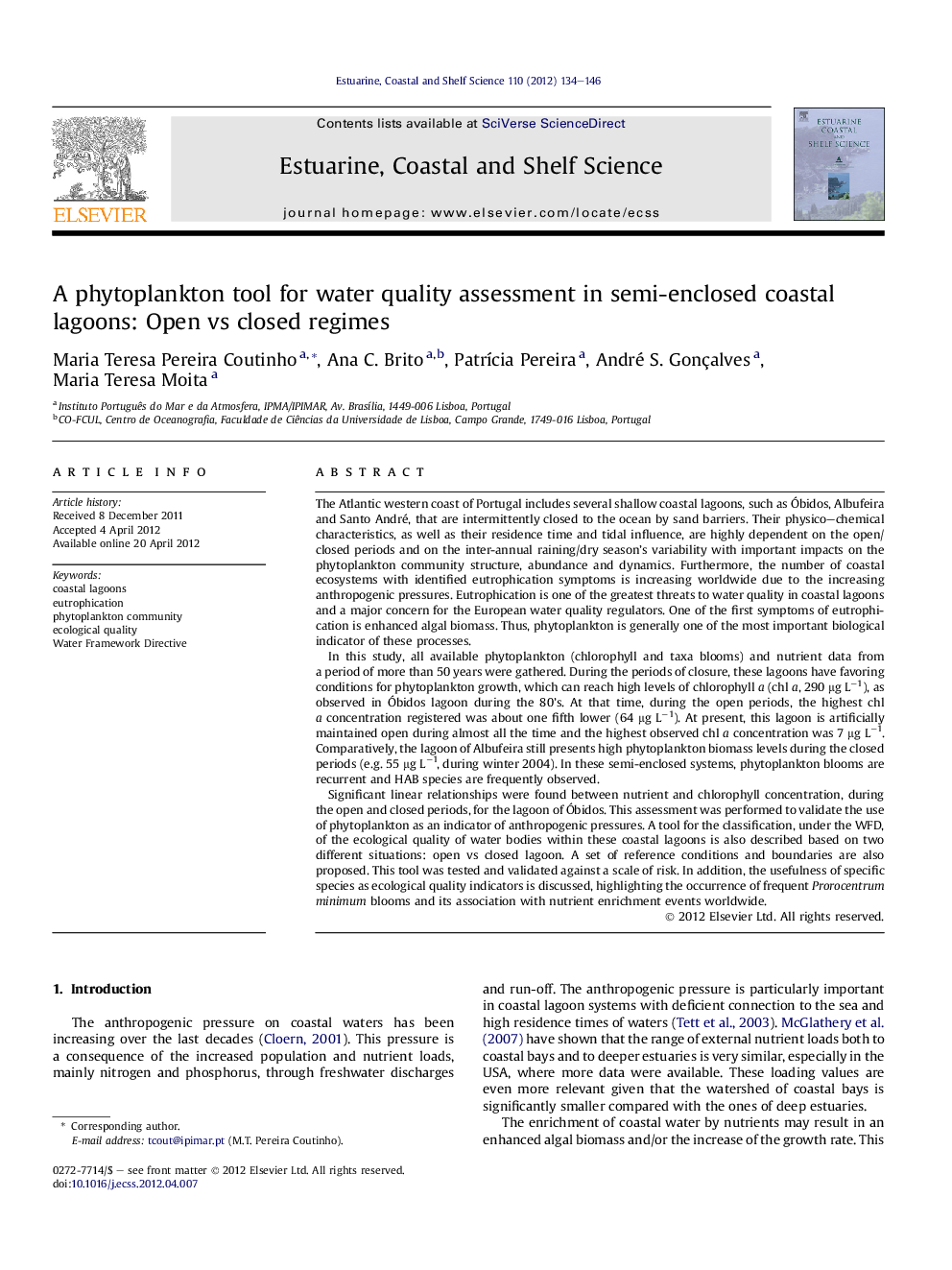| Article ID | Journal | Published Year | Pages | File Type |
|---|---|---|---|---|
| 4540121 | Estuarine, Coastal and Shelf Science | 2012 | 13 Pages |
The Atlantic western coast of Portugal includes several shallow coastal lagoons, such as Óbidos, Albufeira and Santo André, that are intermittently closed to the ocean by sand barriers. Their physico–chemical characteristics, as well as their residence time and tidal influence, are highly dependent on the open/closed periods and on the inter-annual raining/dry season's variability with important impacts on the phytoplankton community structure, abundance and dynamics. Furthermore, the number of coastal ecosystems with identified eutrophication symptoms is increasing worldwide due to the increasing anthropogenic pressures. Eutrophication is one of the greatest threats to water quality in coastal lagoons and a major concern for the European water quality regulators. One of the first symptoms of eutrophication is enhanced algal biomass. Thus, phytoplankton is generally one of the most important biological indicator of these processes.In this study, all available phytoplankton (chlorophyll and taxa blooms) and nutrient data from a period of more than 50 years were gathered. During the periods of closure, these lagoons have favoring conditions for phytoplankton growth, which can reach high levels of chlorophyll a (chl a, 290 μg L−1), as observed in Óbidos lagoon during the 80's. At that time, during the open periods, the highest chl a concentration registered was about one fifth lower (64 μg L−1). At present, this lagoon is artificially maintained open during almost all the time and the highest observed chl a concentration was 7 μg L−1. Comparatively, the lagoon of Albufeira still presents high phytoplankton biomass levels during the closed periods (e.g. 55 μg L−1, during winter 2004). In these semi-enclosed systems, phytoplankton blooms are recurrent and HAB species are frequently observed.Significant linear relationships were found between nutrient and chlorophyll concentration, during the open and closed periods, for the lagoon of Óbidos. This assessment was performed to validate the use of phytoplankton as an indicator of anthropogenic pressures. A tool for the classification, under the WFD, of the ecological quality of water bodies within these coastal lagoons is also described based on two different situations: open vs closed lagoon. A set of reference conditions and boundaries are also proposed. This tool was tested and validated against a scale of risk. In addition, the usefulness of specific species as ecological quality indicators is discussed, highlighting the occurrence of frequent Prorocentrum minimum blooms and its association with nutrient enrichment events worldwide.
